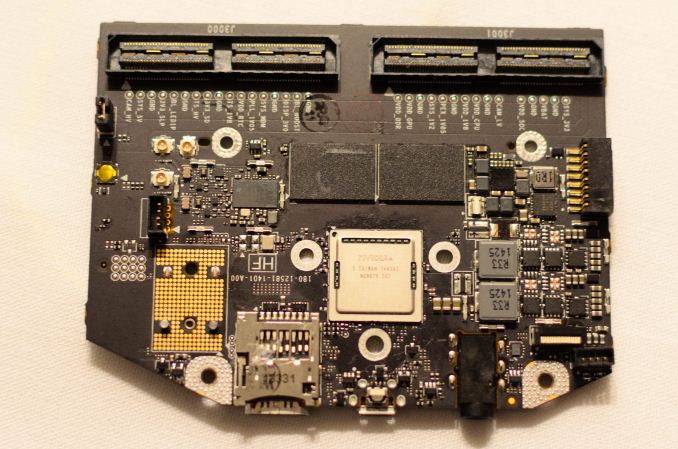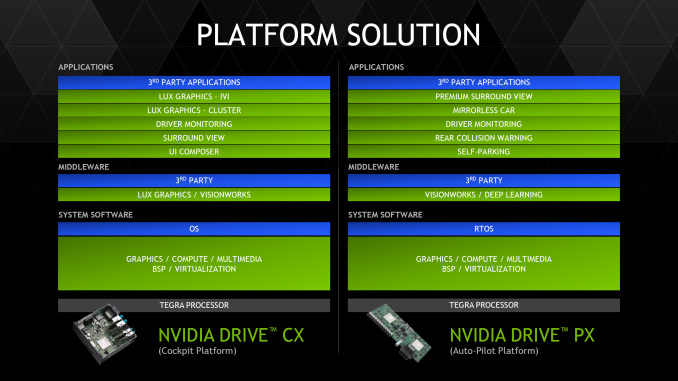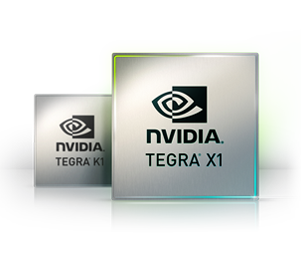NVIDIA Tegra X1 Preview & Architecture Analysis
by Joshua Ho & Ryan Smith on January 5, 2015 1:00 AM EST- Posted in
- SoCs
- Arm
- Project Denver
- Mobile
- 20nm
- GPUs
- Tablets
- NVIDIA
- Cortex A57
- Tegra X1
Final Words
With the Tegra X1, there have been a great deal of changes when compared to Tegra K1. We see a move from Cortex A15 to A57 on the main cluster, and a move from a single low power Cortex A15 to four Cortex A53s which is a significant departure from previous Tegra SoCs. However, the CPU design remains distinct from what we see in SoCs like the Exynos 5433, as NVIDIA uses a custom CPU interconnect and cluster migration instead of ARM’s CCI-400 and global task scheduling. Outside of these CPU changes, NVIDIA has done a great deal of work on the uncore, with a much faster ISP and support for new codecs at high resolution and frame rate, along with an improved memory interface and improved display output.
Outside of CPU, the GPU is a massive improvement with the move to Maxwell. The addition of double-speed FP16 support for the Tegra X1 helps to improve performance and power efficiency in applications that will utilize FP16, and in general the mobile-first focus on the architecture makes for a 2x improvement in performance per watt. While Tegra K1 set a new bar for mobile graphics for other SoC designers to target, Tegra X1 manages to raise the bar again in a big way. Given the standards support of Tegra X1, it wouldn’t be a far leap to see more extensive porting of games to a version of SHIELD Tablet with Tegra X1.
NVIDIA has also made automotive applications a huge focus in Tegra X1 in the form of DRIVE CX, a cockpit computing platform, and DRIVE PX, an autopilot platform. Given the level of integration and compute present in both DRIVE CX and PX, there seems to be a significant amount of value in NVIDIA’s solutions. However, it remains to be seen whether OEMs will widely adopt these solutions as car manufacturers can take multiple years to implement a new SoC. Compared to the 3-4 month adoption rate of an SoC in a phone or tablet, it's hard to pass any judgment on whether or not NVIDIA's automotive endeavors will be a success.
Overall, Tegra X1 represents a solid improvement over Tegra K1, and now that NVIDIA has shifted their GPU architectures to be targeted at mobile first, we’re seeing the benefits that come with such a strategy. It seems obvious that this would be a great SoC to put in a gaming tablet and a variety of other mobile devices, but it remains to be seen whether NVIDIA can get the design wins necessary to make this happen. Given that all of the high-end SoCs in the Android space will be shipping with A57 and A53 CPUs, the high-end SoC space will see significant competition once again.













194 Comments
View All Comments
eanazag - Wednesday, January 7, 2015 - link
I'm not totally sure why all the NV and Apple back and forth. I see this as an Apple competitive chip for Android tablets. Why would Apple jump the Imag. Tech ship? At release time they have had the best GPU in a SOC for their iPads. ImgTech has been good for Apple iteration over iteration.May Apple be interested in licensing some IP from NV? Maybe. Apple does a lot of custom work and has a desire to remain in the lead on the mobile SOC front at device release.
lucam - Wednesday, January 7, 2015 - link
Old news, after 2 years nobody knows what happened since then.mpeniak - Thursday, January 8, 2015 - link
Totally!!!jwcalla - Monday, January 5, 2015 - link
It seems like Denver was a huge investment that has produced virtually no fruit so far.Time to market seemed to be NVIDIA's problem with Tegra in the past so it does make sense to get Maxwell out the door ASAP.
syxbit - Monday, January 5, 2015 - link
Exactly. Denver has been a massive disappointment. It really needs to be on 20nm. At 28nm performance is too inconsistent, and throttles too much.I just find it funny how arrogant Nvidia is. They're always boasting and boasting with these announcements, and yet by the time they ship, they're rarely leading (or in the case of the K1, they're leading, but in literally only 1 shipping device).
djboxbaba - Monday, January 5, 2015 - link
Yes! How can they keep going about this on a yearly basis, disappointment after disappointment from NVidia in the mobile sector.Krysto - Monday, January 5, 2015 - link
Denver needs to be at 16nm. And we might still see it, at the end of the year/early next year if Nvidia releases the X1 on 20nm, and then X2 (I really hope they don't release another "X1", like they did this year with K1, making things very confusing) with Denver and on 16nm.name99 - Monday, January 5, 2015 - link
Unlikely that nV will release 16FF this year or early next year. Apple has likely booked all 16FF capacity for the next year or so, just like they did with 20nm. nV (and Qualcomm and everyone else) with get 16FF when Apple has satisfied the world's iPhone 6S and iPad 2015 demands...GC2:CS - Monday, January 5, 2015 - link
Yep.Like on the presentation, boasting about how Tegra K1 is still the best mobile chip (despite A8X matching it at significally lower power (which they don't have a graph for)) despite being released a "year before", while A8X has been released just "now". (While taking nVidia's logic A8X was "released" just few hours after K1 because imagination had annonced Series 6XT GPU's at CES 2014).
Yojimbo - Monday, January 5, 2015 - link
Tegra K1 is a 28nm part and the A8X is a 20nm device. The Shield tablet did launch 3 months before the iPad Air 2. Apple has a huge advantage in time to market. They can leverage the latest manufacturing technologies, and they don't have to demonstrate a product and secure design wins. Even though the shield tablet is an NVIDIA design, I doubt they have such tight control of their suppliers as Apple has, and they can't leverage the same high-volume orders. Apple designs a chip and designs a known product around that chip while the chip is being designed, and they can count on it selling in high volume. So you are making an unfair comparison of what NVIDIA is able to do and of the strength of the underlying architecture. If you want to compare the Series 6XT GPU architecture with K1's GPU architecture I think it should be done on the same manufacturing technology.